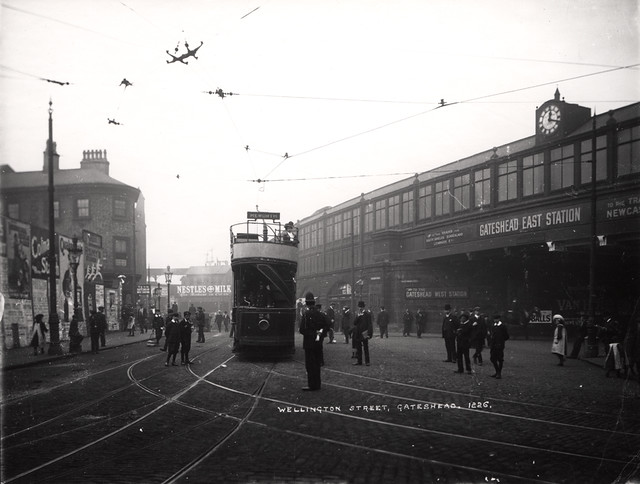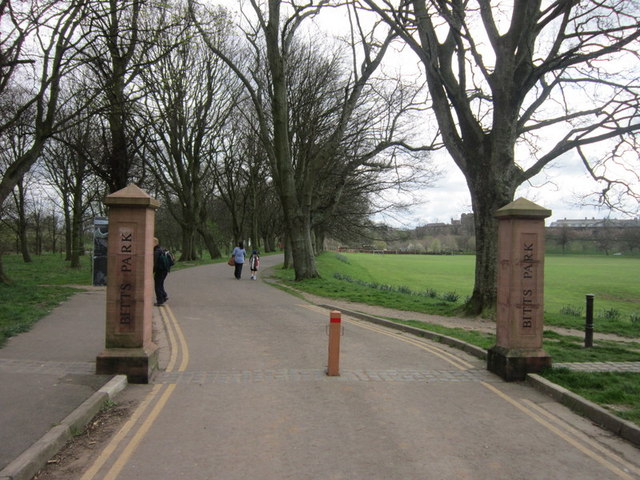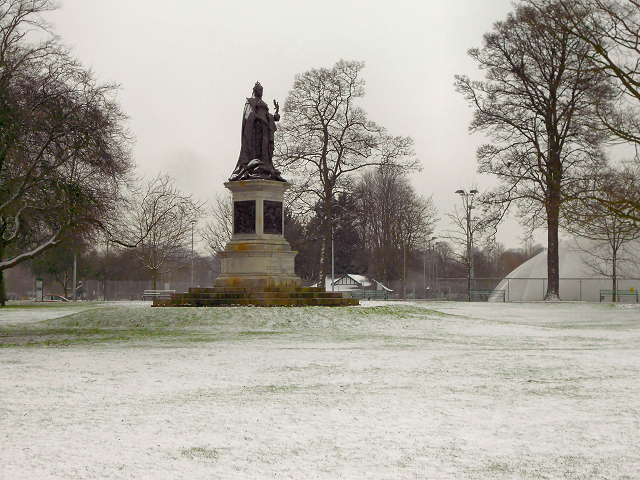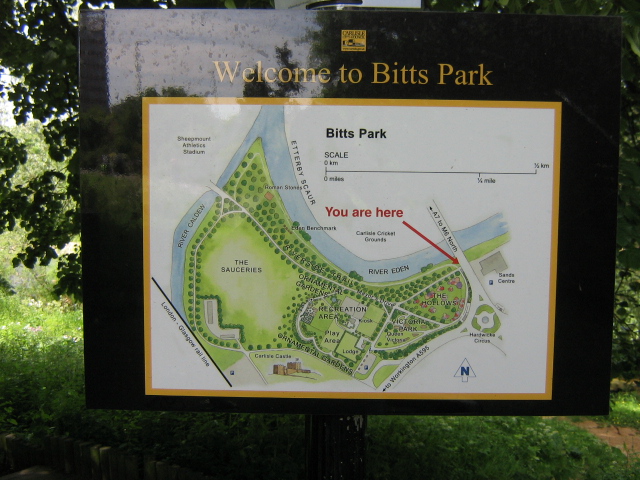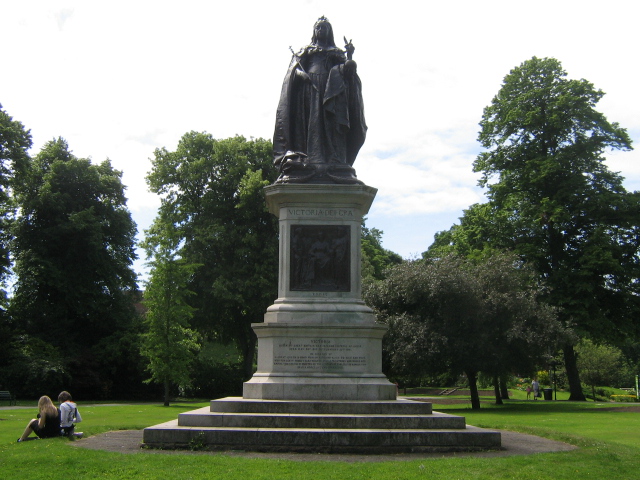Topics > Tyne and Wear > Gateshead > Gateshead and District, 1855 > Public Civil Buildings etc in Gateshead, 1855
Public Civil Buildings etc in Gateshead, 1855
Extract from: History, Topography, and Directory of Northumberland...Whellan, William, & Co, 1855.
ST EDMUND'S, OR KING JAMES' HOSPITAL. The religious institutions which flourished at Monkchester - see Newcastle - no doubt gave rise to those on the south side of the Tyne. Amongst these was the chapel and hospital of St. Edmund, King and Martyr, now called King James's Hospital. Tanner informs us that one Uttan was abbot of a monastery here, prior to 653, but the date of its foundation and the name of its founder are alike unknown. It appears to have been converted into an hospital some time before the dissolution of the religious houses by Henry VIII. for Leland says.; “whereas the hospital of St. Edmund, of Gateshead, in Wyrale, was some time a monastery, as I have heard, and be lykelyhood the same time Bede speak of.'' Its annual value is stated in Dugdale's Monasticon, at £5. 9s. 4d., but according to Speed, at £109. 4s. 4d. Although the ancient history of St. Edmund's Hospital is involved in obscurity, it Is certain that Bishop Farnham, in 1248, annexed to it the chapel and hospital of the Holy Trinity, and amongst the numerous charted respecting this institution, carefully preserved in Gateshead vestry is one dat-ed 28th of April, 1485, in which this latter is styled "the chantry of the Holy Trinity in the Hospital of St. Edmund." Bishop Farnham endowed it with several estates in the neighbourhood, and gave to it a charter in which it is recited that the establishment should consist of four priests, one of whom was to be master, but was to eat at the same table, etc. as the rest of the brethren. After the Dissolution, this establishment became the property of the crown, by whom masters were regularly appointed, but the charters having been afterwards lost, and the revenues partly converted to purposes of private emolument, it was refounded by James I. in 1610. The new society was ordered to consist of . master, who should always be the rector of Gateshead for the time being, and of three poor brethren. In 1810 an act of parliament was passed, which empowered the master and brethren to let leases of their property, in parcels not exceeding one acre, for a term of not more than 99 years, and by the provisions of the said act, the number of brethren was increased to thirteen, ten of whom are styled younger brethren. Each of the elder, or ancient brethren, receives £25 per annum, a suit of clothes, a house to live in, and an allowance for coals. The ten younger brethren must be single men, 56 years of age, or upwards, of good character, and not possessing more than £20 a-year. They each receive £12 per annum, and a suit of clothes every two years. A salary of £40 per annum is paid to the chaplain, who officiates in St. Edmund's Chapel. The whole of the appointments are made by the Rector of Gateshead, as master of the hospital, usually from inhabitants of Gateshead. The ancient brethren reside in houses, built about the year 1812, on lands belonging to the hospital. The revenues, derived from lands and mines, amounted, at the time of the Charity Commissioners' Report, to £525. 17s. per annum.
THE GATESHEAD DISPENSARY, established in 1832, is situated on the west side of High-street, and is solely supported by public subscriptions and donations. Prior to the year above mentioned, this town had provided no relief, of a medical character, for the poor, but immediately after the visitation of the cholera, at that period, this praiseworthy institution was established, and well and efficiently has it done its work. Did we need anything to prove its efficiency, we have only to allude to the facility with which the sufferers at the late disastrous conflagration, were relieved and their wants attended to. It is in contemplation to erect a new and more suitable building as soon as the requisite funds can be obtained. The total number of persons who have received the benefit of this institution, since its commencement in 1832, is upwards of 100,000. T. W. Crester, house surgeon.
THE TOWN HALL is situated in Half Moon Lane, near the south end of the High Level Bridge. It contains a spacious Council Chamber, Police Court, and the various corporate offices, as also the County Court for the Gateshead District.
THE MECHANICS' INSTITUTION - This institution was first established in 1837, and in 1846 a public subscription was commenced for a new building, which was completed and opened in 1848, at a cost of £1,372. The expense of the site for this building was contributed by Cuthbert Ellison, Esq. The establishment contains on the first floor a spacious hall, in which lectures are occasionally delivered, and on the ground floor is the library, with a residence for the librarian. The library contains about 3,200 volumes, besides the various metropolitan and local newspapers, periodicals, etc. Richard Cook, librarian. There is also a Literary Institution in West-street.
GATESHEAD POST OFFICE, is situated in Tyne-lane, and was first established in 1771. A statement of the times of arrival and departure of the several mails will be found prefixed to the Directory.
THE YORK, NEWCASTLE, AND BERWICK, RAILWAY STATION, Half Moon Lane, was erected in 1844, as a station for the Darlington Junction Railway, and was formerly used for the Brandling Junction Railway. Richard Alison, station master.
THE GATESHEAD POOR LAW UNION, comprehends 12 parishes and townships, including an area of 25,493 acres, and a population in 1851, of 48,081 souls. The parishes and townships are Chopwell, Crawcrock, Fellside, Gateshead with Gateshead Fell, Heworth, Lowside, Stella, Swalwell, Ryton, Ryton Woodside, Whickham, and Winlaton. THE UNION WORK HOUSE is situated in Union-lane. Arthur Main, master; Eliza Main,
Also in this Directory (Whellan, 1855) for Gateshead:
- Description of Gateshead
- Churches of Gateshead
- Schools in Gateshead
- Public & Civil Buildings etc in Gateshead
- Manufacturers & Trade
- Borough and Corporation of Gateshead
- Charities
- Gateshead District
- Post Office
- Gateshead and District Directory


